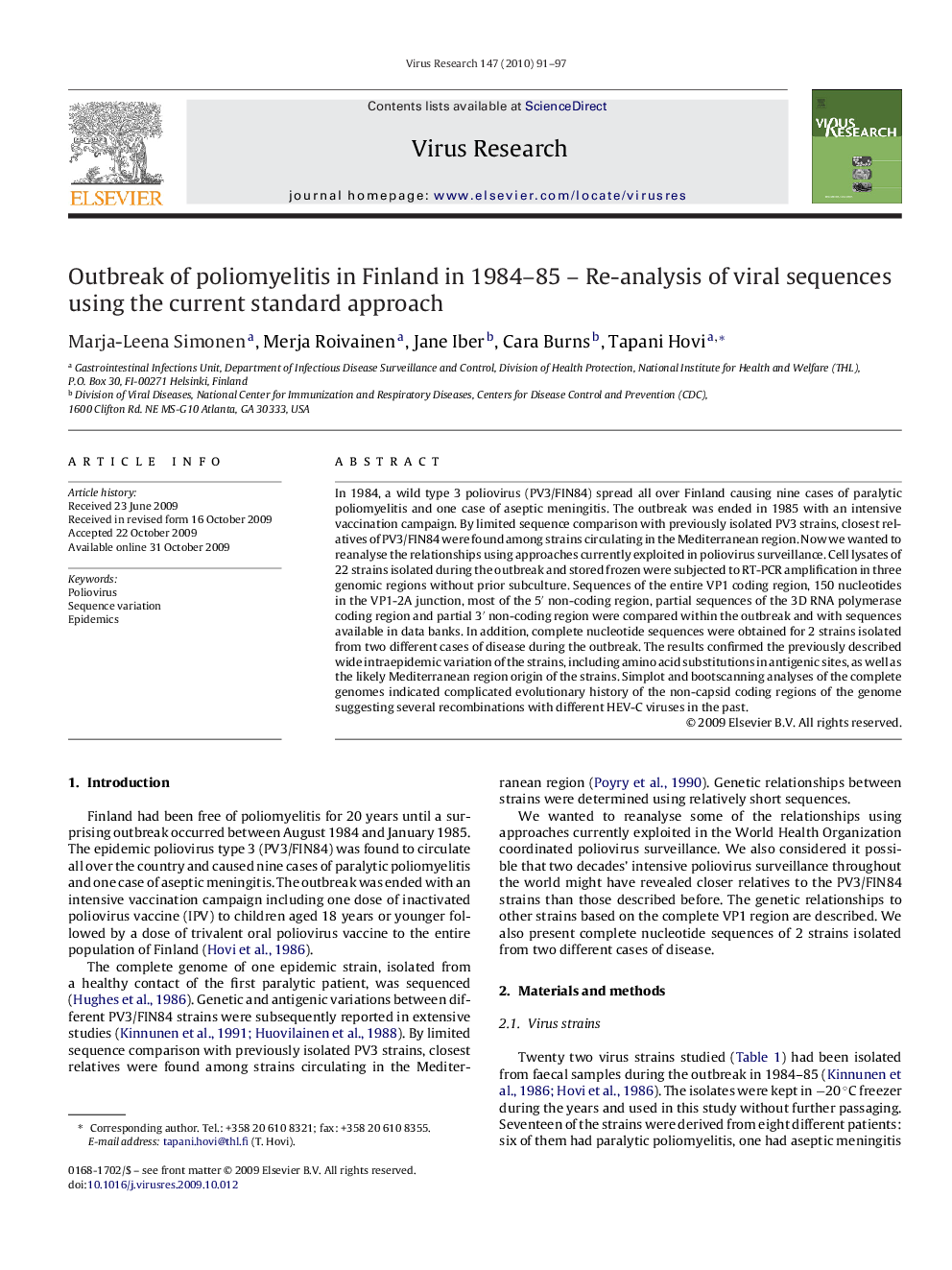| Article ID | Journal | Published Year | Pages | File Type |
|---|---|---|---|---|
| 3429983 | Virus Research | 2010 | 7 Pages |
In 1984, a wild type 3 poliovirus (PV3/FIN84) spread all over Finland causing nine cases of paralytic poliomyelitis and one case of aseptic meningitis. The outbreak was ended in 1985 with an intensive vaccination campaign. By limited sequence comparison with previously isolated PV3 strains, closest relatives of PV3/FIN84 were found among strains circulating in the Mediterranean region. Now we wanted to reanalyse the relationships using approaches currently exploited in poliovirus surveillance. Cell lysates of 22 strains isolated during the outbreak and stored frozen were subjected to RT-PCR amplification in three genomic regions without prior subculture. Sequences of the entire VP1 coding region, 150 nucleotides in the VP1-2A junction, most of the 5′ non-coding region, partial sequences of the 3D RNA polymerase coding region and partial 3′ non-coding region were compared within the outbreak and with sequences available in data banks. In addition, complete nucleotide sequences were obtained for 2 strains isolated from two different cases of disease during the outbreak. The results confirmed the previously described wide intraepidemic variation of the strains, including amino acid substitutions in antigenic sites, as well as the likely Mediterranean region origin of the strains. Simplot and bootscanning analyses of the complete genomes indicated complicated evolutionary history of the non-capsid coding regions of the genome suggesting several recombinations with different HEV-C viruses in the past.
